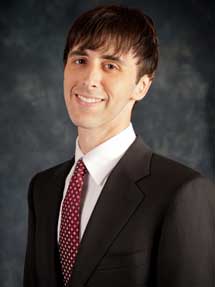Joseph Rakofsky, who last year sued the Internet for defamation and then amended his suit to add more parties, is now asking the court for permission to amend his suit again.
The proposed Second Amended Complaint weighs in at a staggering 268 pages, with 1,223 separately numbered paragraphs. No, I haven’t read it, but I see that it does contain a brand new tort he calls Internet mobbing, which I understand is a claim that prohibits use of the Internet for criticism and revokes the First Amendment. Feel free to wander amidst the legalese and let me know what these papers actually claim.
I will get to it, of course, since I am one of the defendants and also local counsel to 35 defendants. Marc Randazza is lead counsel for our group.
The motion to amend is made because, in New York, you only get to amend a complaint once as of right, which right he already used up just days after starting the suit. After that judicial permission is needed, or else a plaintiff could be constantly moving the goal posts making the case impossible to defend to conclusion.
Mr. Rakofsky also asks for additional relief in the form of amending the caption to correct the name of the lead defendant, the Washington Post, which had originally reported the story of Mr. Rakofsky’s troubles defending a murder trial in Washington D.C. and the judge’s highly uncharitable comments about his representation. The same judge added more just weeks ago when Rakofsky’s former client was sentenced to 10 years after a plea, and called the defense “clueless” and “motivated by self-interest,” according to Jamison Koehler who practices in that neck of the woods.
Other requested relief is to delete eight defendants from the caption because they settled with Rakofsky, including St. Thomas School of Law. And he seeks a default judgment against seven defendants who didn’t bother to answer the complaint at all, presumably because they are out of state and not subject to jurisdiction in New York.
Previously he had moved to add Yahoo! Google and Tech Dirt, but that relief is not mentioned in the Notice of Motion. The current attempt to amend the amended complaint is actually shorter this time than last.
There are numerous motions pending to dismiss. These papers do not address any of those motions.
Documents:
Cross-Motion and Affidavits (total, three pages)
2nd Amend Complaint pt 1 (part 1, 118 pages)
2nd Amend Complaint pt 2 (part 2, 151 pages)
Update (6/8/12):
My Affidavit in Opposition: ET-OppAffFinal
Our Memo of Law in Opposition: Rakofsky Opp to SAC -Final
Update (6/26/12):
Rakofsky’s Reply Memo of Law:ReplyOnMotionToAmend

I thought he was suspended from practice in New Jersey, but it looks like he’s submitted another paper stating that he is an attorney in good standing in New Jersey.
Why don’t you file a motion under Rule 8 ? — have him pick his best claims.
I am pro se and have been subjected to constant ridicule.
There seems to be way more juicy details about the trial that weren’t in the last one. New accusations against the judge, who amazingly is still not a defendant.
I wonder if sanctions can awarded on a per page/paragraph basis.
@tourograd He’s reinstated as per the notice published on 5/2/12 Link to pdf: http://www.judiciary.state.nj.us/notices/2012/n120502d.pdf
I’m amazed Matthew H. Goldsmith, Esq. would sign his name to this.
@kay sieverding –
Why don’t you file a motion under Rule 8 ?
Probably because New York has no such thing. Our first Rule is 101.
Speaking of rules, can you recommend a good reference on New York civil procedure?
Siegel on NY Practice is a good reference on civil procedure.
It was the Rakofsky affair that first brought me to your very readable blog, Eric. I continue to be astonished at how the case unfolds. I am not a lawyer (I’m an IT professional) but although I took 4 years of Latin in high school 🙂 I don’t know how to express this in legalese, but on reading the Amended Complaint it appears that the plaintiffs are trying their case in the motions. Why else quote extensively from the original trial transcript? It seems a pity to me that some have already settled on what seems to be “open and shut” (if there is such a thing in civil law). Hmmm. I think there might be a screen play in here somewhere.